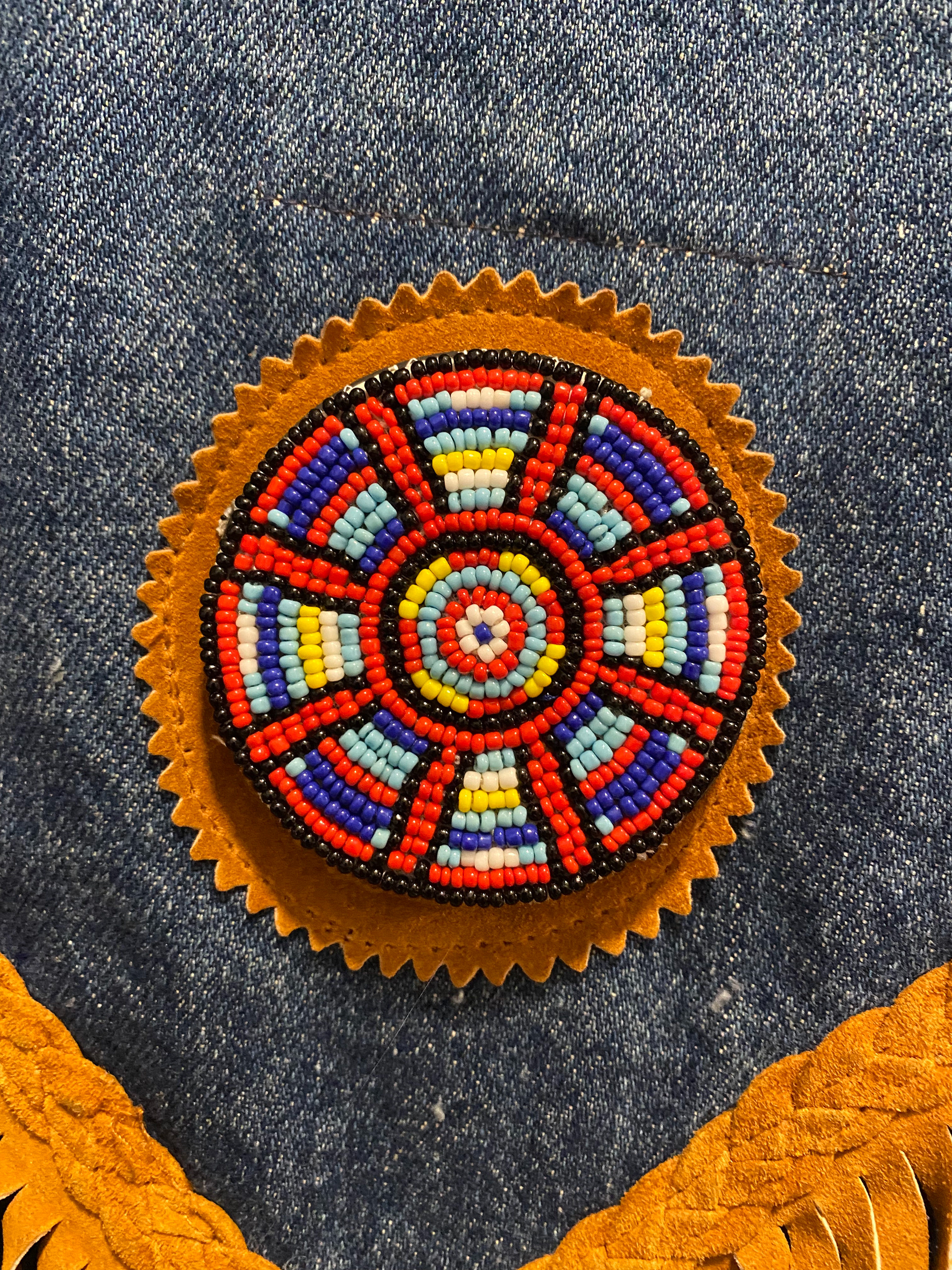This jacket has been a project in the making for a year now. With the right amount of motivation and skill, I was finally able to see it's completion. The process was not easy and I've learned a lot along the way.


The project was inspired by my desire to upcycle vintage and second hand clothing items into bespoke light based wearables for large scale events. The jacket is meant to be worn as a way to liven up the atmosphere as well as act as a beacon when the sun goes down. By interacting with the patches on the lapel, the wearer can set the colour pattern to match the environment or contrast it when needed. It is meant to operate as a covert jacket during the day, and a beautiful installation at night.
The video above is during the first night of wearing the jacket. After travelling with it through airports and cars, I arrived to discover that 4 of my solder points became either disconnected or weak. The microcontroller wasn't mounted into a case because I have to fabricate something that can be 3D printed or molded and still haven't figured out the best option for that yet. Now I know a bit more tho. So after some last minute reconstruction, I was able to patch up the points that needed it and bring it with me to Coachella.
After the first night, I took the code and manipulated it so that the skate button ran through one light sequence and the cactus pattern ran through another. I wanted to play with the code a bit more before arriving on the first day, but with having to fix my components there just wasn't enough time.
Using the first project and iteration of this jacket as a starting point, I was able to adapt it to a more permanent and stable electrical system.
Initially I was running 20 AWG colour coded wire throughout the jacket to connect the microcontroller to the NeoPixels. It would have worked fine, but a key element for this jacket was to make sure that it was modular, so I switched to a JST 3 pin connector. The components are not the most stable and it was important for me to able able to easily switch them out in the event of a malfunction.
I used ones from amazon for this project because of time constraints. But they had large clasps that can catch on materials or press in the skin.
Thankfully I did this because the night before I was going to travel with my jacket the 90 LED NeoPixel strand that was around the lapel decided to stop working!
Soldering the 3 cable JTS connectors to the Adafruit Circuit Playground express and the NeoPixels.
By taking two connectors and twisting them together, then soldering them to the NeoPixels, I was able to create a modular system for replacing components.
This was my first time soldering in any meaningful way. I would say that my skills are mediocre at best, and my at home set up is sub-par, but I got the job done! Definitely will need to continue to improve my soldering skills.



Left was my soldering set up. Middle is what the wires look like on the backside of the jacket. Right is the inside of the button. I used gaffer tape to hold down the GND wire to the conductive fabric and hot glue between the conductive and non-conductive fabric layers on the input side.



I used snaps in a couple of different ways on this project. One of the ways was to attach one to the back of the beadwork and the other to the leather patches. I wanted to avoid sewing through the leather. Both to save time and frustration. This solution allows for the patches to be removed and the components replaced if needed.
The other way was to attach the snap to the inside of the jacket and the pocket to create a place to tuck my microcontroller and battery.
The diagram is pretty simple. The CPX is connected to the NP Rings through pin A3. The NP rings are daisy chained together. The buttons on the lapel are also attached to the CPX at pins A7 and A4 as well as to GND. The whole system is powered by a battery pack of 3 x AAA.
Initially, I had the jacket coded so that the cactus patch controlled the NeoPixel strand only and the skate patch controlled the rings. But after the strand stopped working, I had to come up with a different interaction. I ended up having one patch programmed to run a rainbow animation on the lights and the other patch ran a theater chase rainbow pattern. The Github repository has a link to both options.
Advanced Wearables, April 2022